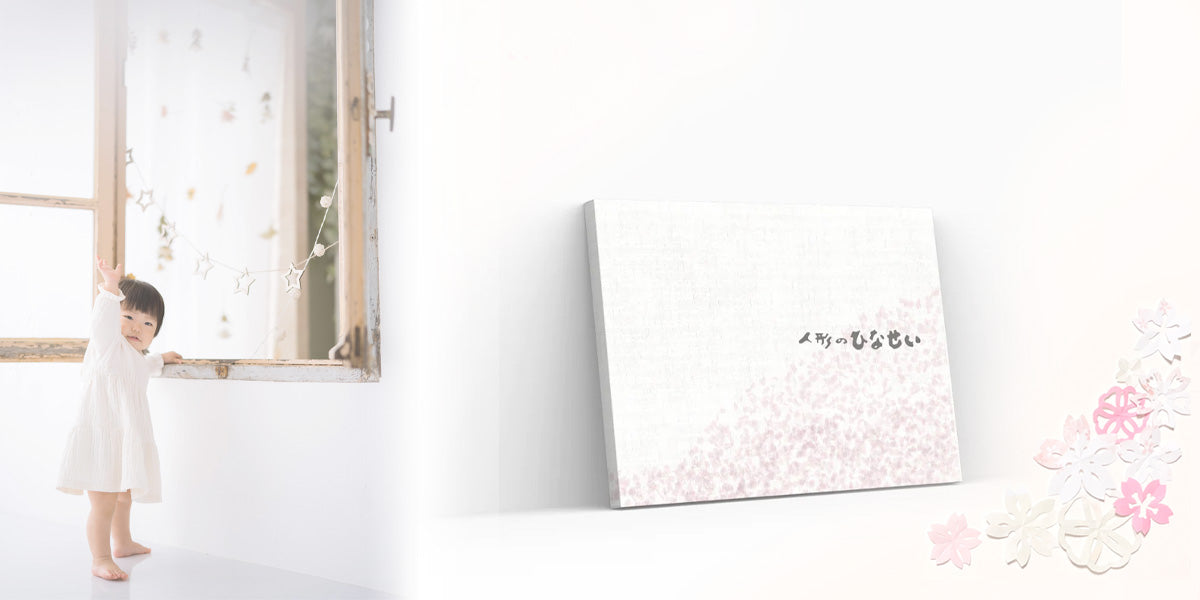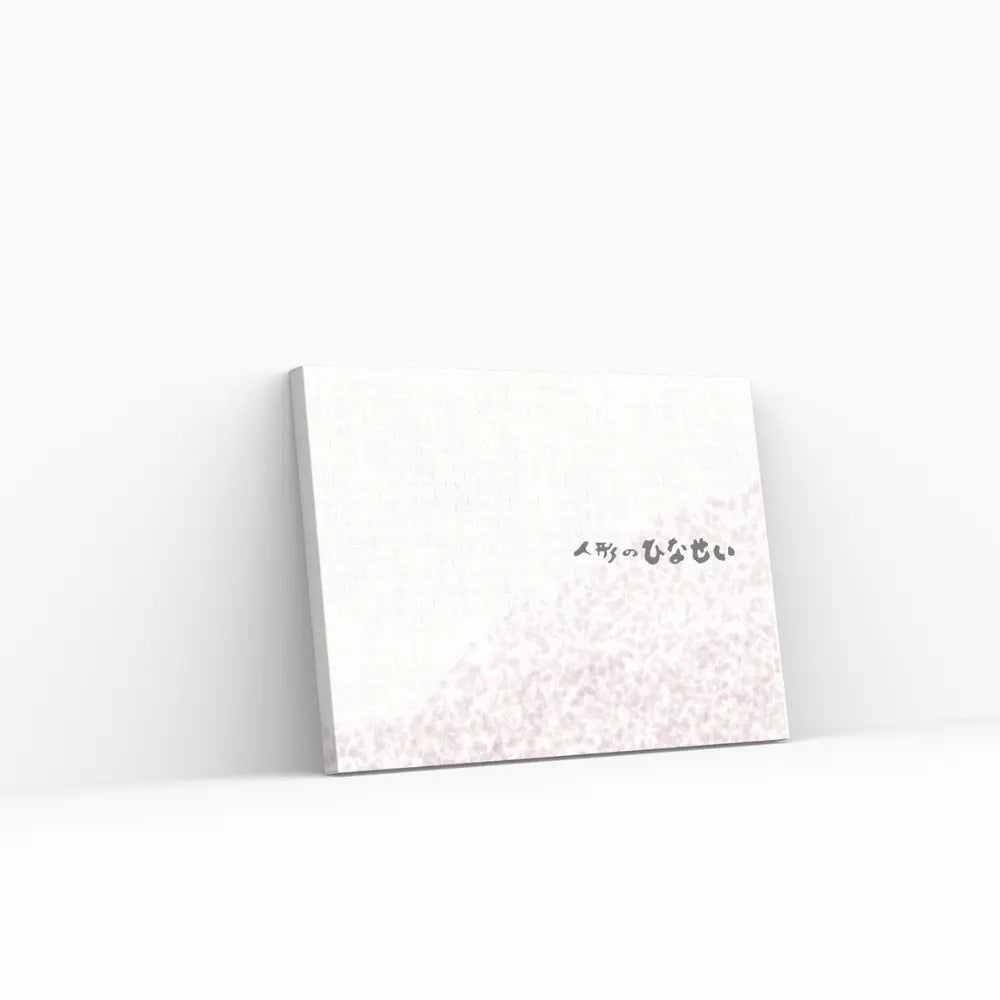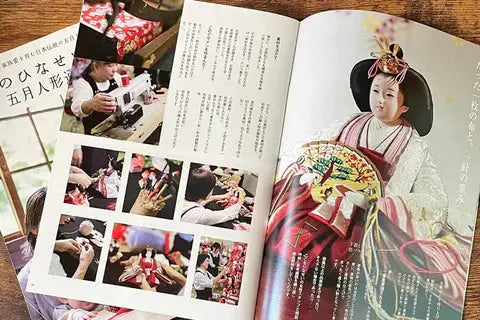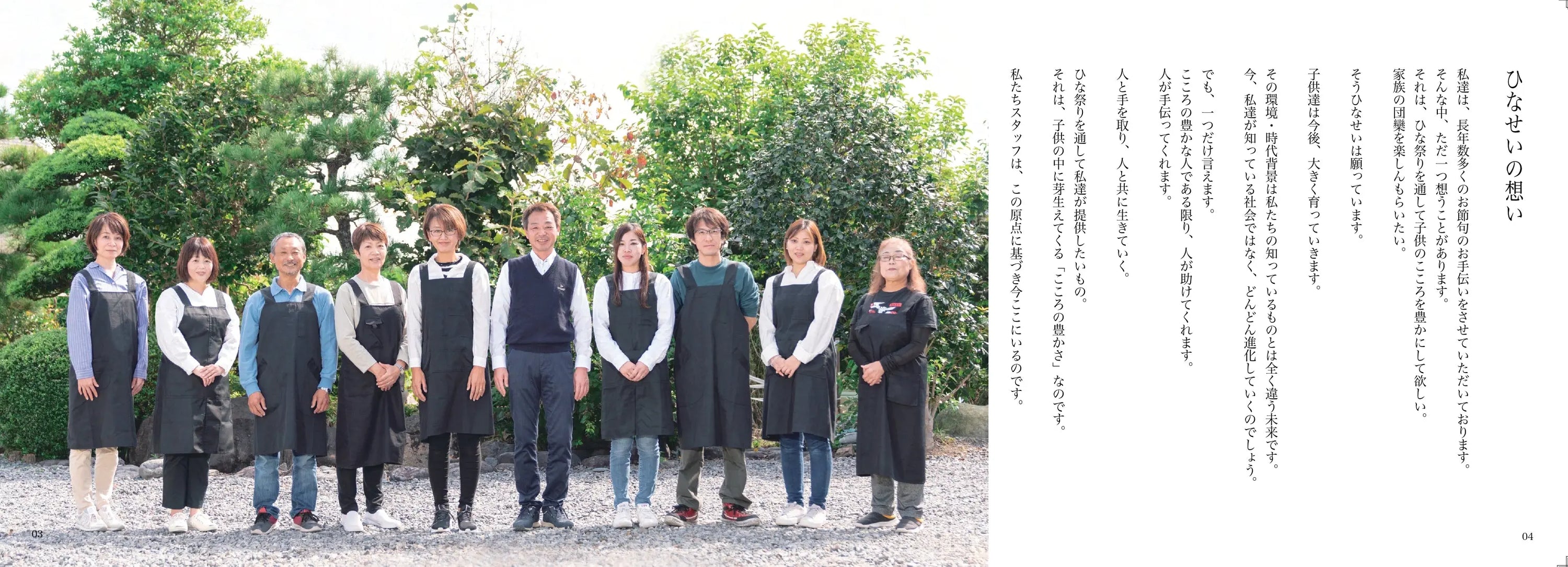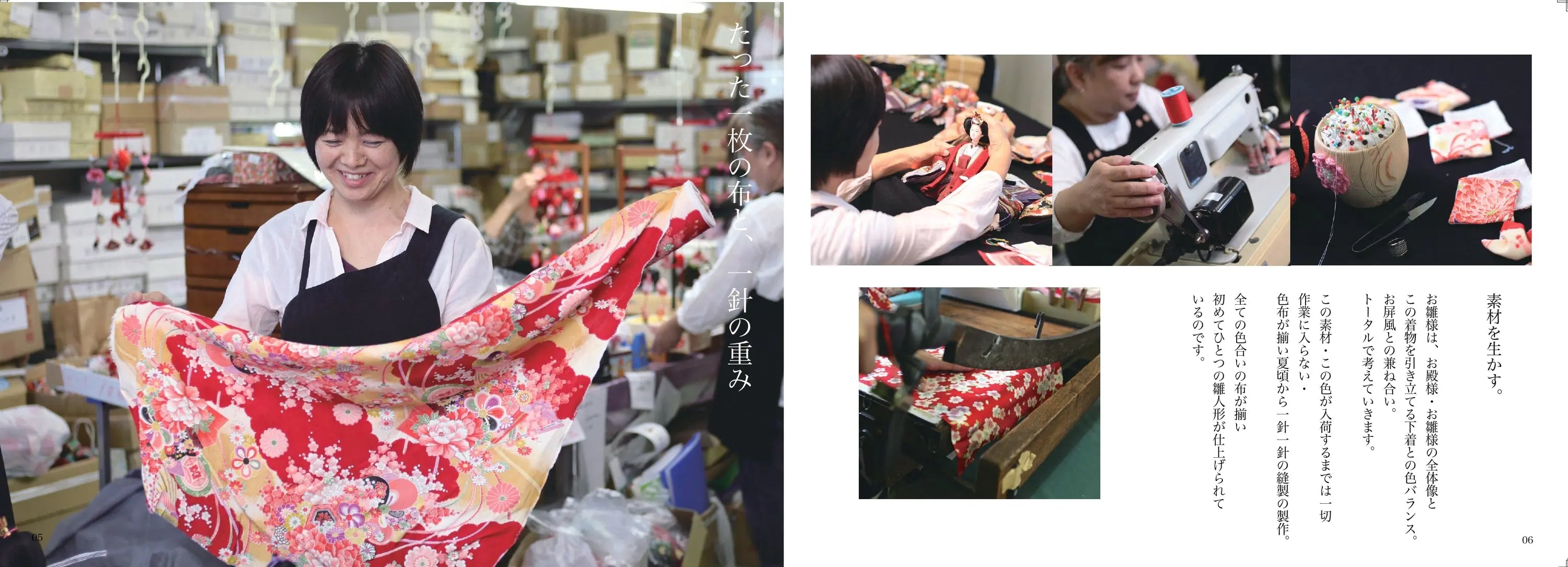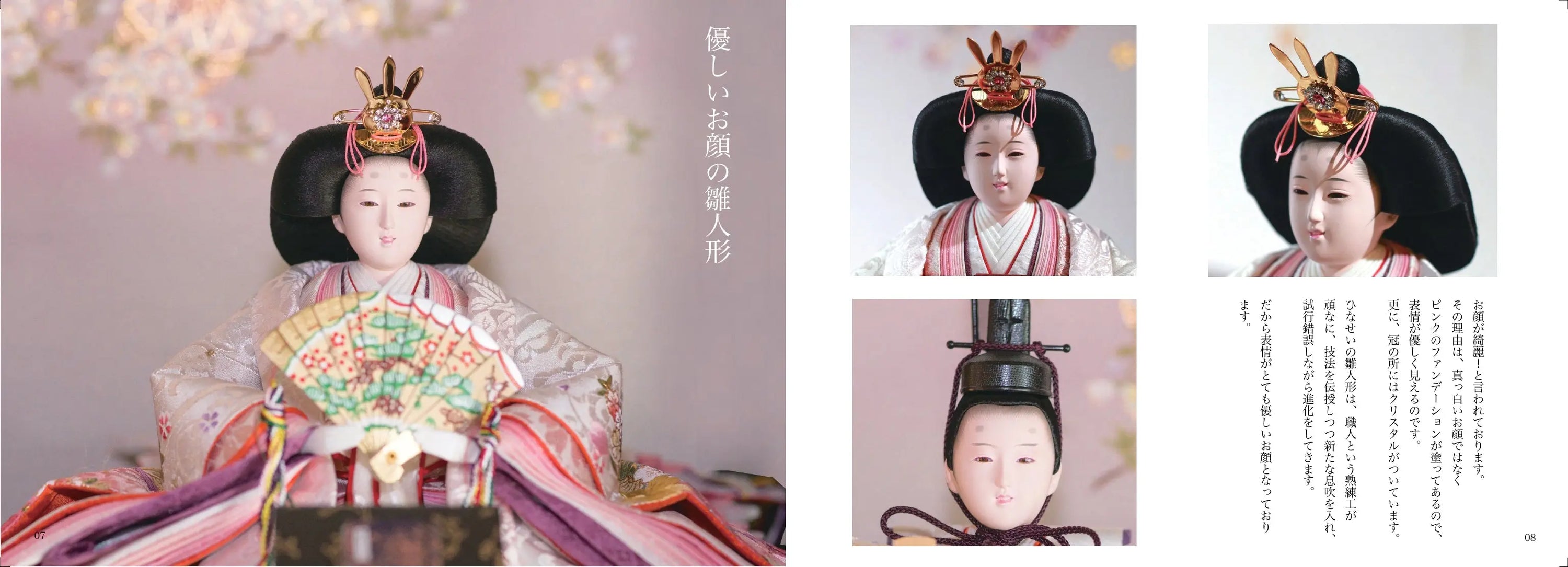-Events and seasonal festivals that allow you to experience the changing seasons of Japan-
Explains the charm of traditional events and the five seasonal festivals that color Japan's four seasons.
The five seasonal festivals refer to the following five seasonal festivals that occur throughout the year.
・Jinjitsu (January 7th)
・Joshi (=March 3rd)
・Tango (May 5th)
・Tanabata (= July 7th)
・Chouyo (= September 9th)
We will introduce in detail the historical events that take place in each season of the year: spring, summer, autumn, and winter.
Learn about ideas for having fun with your family and the meaning behind the events.
Let's feel the change of seasons.

(The Hina Nagashi festival is the origin of Hinamatsuri: nowadays it is common todisplay Hina dolls !)
---- table of contents ----
Click below to jump
7. January 7th: Jinjitsu Festival ~ Nanakusa Festival: A spring event to pray for good health ~
9. May 5th: Tango no Sekku (Children's Day) : A traditional event to pray for the growth of boys
10. July 7th: Tanabata Festival - A romantic summer event where people make wishes on the stars
12. Preserving Japanese Events in the Modern Age : A Practical Guide for Enjoying with the Family
13. Summary : Strengthening family bonds through Japan's four seasons and events

1. Exploring the charm of Japan's four seasons and traditional events: ways to have fun with your family throughout the year
Each of Japan's four seasons has its own unique beauty and scenery, and the traditional events that take place during these seasons provide special moments for families.
In spring, people enjoy cherry blossom viewing, in summer they watch fireworks in the night sky, in autumn they enjoy the beauty of nature by viewing the autumn leaves, and in winter they visit shrines for the first time of the year to pray for peace in the new year.
Through traditional Japanese events, you can rediscover the charm of the four seasons and deepen family bonds .
On this page, we will provide detailed information about the representative events and five seasonal festivals of each season, and introduce how to enjoy them with your family.
2. Enjoy Spring Events: Cherry Blossom Viewing, Hinamatsuri, and Boys' Festival: How to Spend Them
Spring is a season that symbolizes new beginnings and many events are held.
Cherry blossom viewing is a traditional event that symbolizes spring in Japan , and spending time under the cherry blossoms with family and friends is a special experience.
On Hinamatsuri, people decorate their homes with Hina dolls to celebrate the growth of girls and enjoy traditional Japanese sweets.
The Boys' Festival is an event to pray for the healthy growth of boys, and it is customary to decorate carp streamers and May dolls and eat kashiwa mochi.
- Doll's Festival (Girls' Day): A celebration of girls' births with the display of Hina dolls
- Graduation Ceremony : A ceremony to mark the end of student life
- Cherry Blossom Viewing: Enjoy a picnic or stroll under the cherry blossoms
- End of fiscal year/beginning of new year: Preparing for the new fiscal year and reaching a turning point
- Entrance Ceremony/Kindergarten Entrance Ceremony : A ceremony to celebrate the start of a new life
- Children's Day and Boys' Day (Iris Festival): Displaying May dolls to celebrate the healthy growth of boys
Enjoy this spring event and spend some special time with your family while experiencing the beauty of nature.
3. Experience the traditional summer events: the origins and enjoyment of Tanabata, summer festivals, and fireworks displays
In the summer, the whole of Japan is filled with exciting events.
Among these, Tanabata , summer festivals , and fireworks displays are particularly enjoyable events.
Each one has a special meaning that has been cherished since ancient times.
●Tanabata is a festival held on July 7th, which is associated with the Milky Way that spreads across the night sky.
This is a romantic day when Orihime and Hikoboshi are said to be able to meet only once a year.
Why not write your wishes on strips of paper with your family and friends and hang them on bamboo leaves?
For example, "I hope you get better at studying."
Try asking the stars to make your wish come true, such as "May I have more friends."
It's fun to imagine your wishes reaching the heavens at night under the swaying bamboo leaves of Tanabata decorations .
I'm sure you'll want to decorate it again next year.
●Summer Festivals <br>Summer festivals are festivals that bring together towns and regions to enjoy themselves.
At night, the town becomes lively and rows of food stalls line the streets.
There are lots of fun things to do, such as shaved ice, yakisoba, and goldfish scooping .
Wearing a yukata, you can walk through the city at night with your family and friends.
The lights of the food stalls sparkle and cheerful voices can be heard from all around.
As the Bon Odori music plays and you join the dance circle, you'll feel as if you've traveled back in time.
At some festivals, huge fireworks are shot into the night sky with a loud bang, and large flowers bloom.
At this moment, memories of the summer festival will be deeply etched in your heart.
Fireworks Festival
This event can be considered the climax of the summer festival, and is a moment that will truly create memories that will last a lifetime.
The colorful fireworks that spread across the night sky will capture your heart in an instant.
Just imagine .
Everyone spreads out a sheet, feels the night breeze, and enjoys watching the huge fireworks unfold before their eyes.
Every time I hear the sound of fireworks, my heart starts beating faster and I get excited wondering , "What kind of firework will be set off next?"
This excitement cannot be experienced on television or in photographs; it is a special experience that can only be understood by being there in person .
These summer traditions , Tanabata , summer festivals , and fireworks displays , are fun events that you will want to experience in the future.
Please come along with your family and friends to these events and create some special summer memories.
Every time summer comes around, there are wonderful times that I want to experience again .
- Tanabata Festival : An event on July 7th where people write their wishes on strips of paper and hang them on bamboo.
- Summer festivals and fireworks displays : Festivals held at shrines or local areas on summer nights, and events where fireworks are launched into the night sky.
- Obon : An event to honor the spirits of ancestors and gather with family and community
- Victory over Japan Day : August 15th is a day to commemorate the war dead and pray for peace.

4. Celebrating the Harvest with Autumn Events: How to Spend the Full Moon, Moon Viewing, and Autumn Festivals
Autumn is the season of harvest, and many events are held to give thanks for the bounty.
On the fifteenth night of the month (the harvest moon), a "moon viewing" ceremony is held , where people offer moon-viewing dumplings and gaze upon the beautiful moon .
At autumn festivals, people carry portable shrines and hold ceremonies to pray for a good harvest, and each region has its own unique festival.
Autumn events are a great opportunity to experience the blessings of nature .
- Double Ninth Festival : A custom of drinking and decorating with chrysanthemum flowers to celebrate longevity
- Jugoya : Enjoy the full moon and give thanks for the harvest
- Respect for the Aged Day : A day to show respect and gratitude to the elderly
- Autumnal Equinox : The day when the length of day and night are equal
- Autumn Festival : A traditional event celebrating a good harvest
- Sports Day : A healthy and healthy event
- Culture Day : A day to respect and celebrate Japanese culture
- Labor Thanksgiving Day : A day to celebrate and give thanks for work
- Shichi-Go-San : A traditional Japanese event celebrating children's growth
- Halloween : A thorough comparison of Halloween in Japan with the rest of the world
5. Traditional winter events and warm family time: The appeal of first shrine visits, New Year's Day, and snow festivals
Winter events provide warm family time to combat the cold .
New Year's is Japan's biggest festival and a special time to pray for happiness in the new year.
People visit shrines on New Year's Day to pray for safety and peace in the coming year .
Also, at the Snow Festival, beautiful snow sculptures are lined up, allowing you to enjoy the scenery unique to winter.
- Winter Solstice : The shortest day of the year, on which it is customary to eat pumpkin and take a yuzu bath.
- December/New Year 's Eve: To conclude the year, people ring the bells to welcome the new year.
- New Year's Day, First Shrine Visit, New Year : Celebrate the New Year and visit shrines and temples for the first time in the year to pray for safety.
- Jinjitsu Festival : Eating rice porridge with seven herbs on January 7th to pray for good health
- Coming-of-Age Day/Coming-of-Age Ceremony : A day to celebrate new adults, with a ceremony held
- Setsubun : A day to throw beans to ward off evil spirits
- Risshun : The day when winter ends and spring begins
- National Foundation Day : A day to celebrate the founding of Japan
History of the 6th and 5th Seasonal Festivals and How to Celebrate Them Today: A Japanese Tradition to Enjoy with the Family
It is a traditional event celebrated with the change of seasons throughout the year.
It is an important milestone day on which people pray for health and prosperity.
Praying for family happiness in harmony with nature,
This heartwarming custom has been passed down through generations.
Specific dates and times of the five seasonal festivals and how to read them
- Jinjitsu Festival (Seven Herbs Festival): January 7th
- Jōmi Festival (Peach Festival): March 3rd
- Tango Festival (Iris Festival): May 5th
- Tanabata Festival (Sasatake Festival): July 7th
- Chrysanthemum Festival (Chrysanthemum Festival): September 9th
The five seasonal festivals are traditional Japanese events celebrating turning points in history, and each has its own unique meaning and history.
These festivals convey ancient customs to the present day and have been passed down as important cultural traditions enjoyed by families .
7. Jinjitsu Festival (Seven Herbs Festival): A spring event to pray for good health
Jinjitsu Festival is a traditional event held on January 7th, during which it is customary to eat rice porridge with seven herbs in hopes of good health .
The "seven herbs of spring" used in nanakusa-gayu are parsley, shepherd's purse, gogyo, chickweed, henbit, turnip, and Japanese radish. These are wild herbs that sprout in the cold of winter, and have long been believed to have medicinal properties.
This event is held to soothe the stomach and intestines that have been fatigued by the New Year's feast and to pray for good health for the year ahead , and is a custom that was introduced from ancient China and has since taken root in Japan.
If you would like to know more about the Jinjitsu Festival in detail, we have created an explanatory page here.
Please click below to view.
For more information on Jinjitsu Festival and Nanakusa Festival, please click here .

8. Hinamatsuri (Girl's Festival): A traditional Japanese event celebrating the growth of girls
Jōshi no Sekku, or Hinamatsuri, is a traditional Japanese event held on March 3rd, a day to pray for the healthy growth of girls .
On this day, people decorate their homes with Hina dolls and enjoy a special meal together as a family.
Hina dolls have long been believed to ward off evil spirits , and displaying them is believed to protect children from misfortune.
Hinamatsuri is an event that has been held since the Heian period, and its origins lie in the "Nagashibina" ritual, in which dolls are floated down a river to ward off evil spirits.
It also provides a unique explanation of modern values regarding Hinamatsuri, the Girls' Festival celebrated on Jōmi (Peach Festival).
Nowadays, there are an increasing number of stylish types of Hina dolls.
Take a look at the Hina dolls that create the atmosphere of the Doll's Festival (Hinamatsuri).
See a list of stylish Hina dolls
9. Children's Day (Tango no Sekku): A traditional event to pray for the growth of boys
Tango no Sekku is an event held on May 5th, a day to pray for the healthy growth of boys .
Also known as Children's Day, on this day it is customary to put up carp streamers, display May dolls, and eat kashiwa mochi and chimaki.
The carp streamer, depicting a carp climbing a waterfall without giving in to adversity, is a symbol of a boy growing up strong .
This event originated during the Sengoku period when samurai began praying for the health and growth of boys, and is still cherished in many households today.
Have a wonderful Children's Day.
The latest designs of May dolls can also be displayed stylishly in a Western-style room.
See the latest fashionable May dolls and helmets
10. Tanabata Festival: A romantic summer event where people make wishes on the stars
Tanabata is a traditional Japanese event held on July 7th, and is said to be the only day in a year when Orihime and Hikoboshi, floating in the Milky Way, can meet .
On this day, families have the custom of writing their wishes on strips of paper and attaching them to bamboo leaves.
Tanabata originated from the ancient Chinese star festival , and after being introduced to Japan it became established as a unique part of Japanese culture.
This event, where people make wishes while looking up at the starry sky on a summer night, is romantic and a great opportunity to create family memories.

Beautiful Hina dolls resembling Orihime and Hikoboshi [Oto Hina]
11. Double Ninth Festival (Chrysanthemum Festival): A traditional autumn event celebrating longevity
The Double Ninth Festival is a traditional Japanese event held on September 9th, and has long been known as the Chrysanthemum Festival.
On this day, it is customary to decorate with chrysanthemum flowers and drink chrysanthemum wine to celebrate longevity .
The Double Ninth Festival is one of the five seasonal festivals introduced from China, and is based on the idea of Onmyodo, and was considered the day when the sun overlaps the most .
The chrysanthemum is a flower that symbolizes longevity and immortality, and Double Ninth Festival is a special day to pray for the health and longevity of family members.
The following page provides detailed information on how to enjoy the Double Ninth Festival.
What is the Double Ninth Festival on September 9th? | Click here for more information
12. Preserving Japanese Events in Modern Times: A Practical Guide for Family Fun
Japan's traditional events are closely linked to the nature and culture of the four seasons, and we hope to incorporate them into our modern lives.
Even in today's busy society, finding ways to enjoy these events as a family can strengthen family bonds and pass on Japanese culture to your children.
Summary: Strengthen family bonds through Japan's four seasons and events
Japan's traditional events and five seasonal festivals that color the four seasons provide irreplaceable time for families and are important cultures that should be passed down through generations.
Spending time with family and enjoying the beauty of nature through seasonal events throughout the year brings richness and color to everyday life .
These events are also a great opportunity to introduce Japanese culture and values to children .

Beautiful and stylish Hina dolls recreated using traditional techniques [Kurumi Hina]

